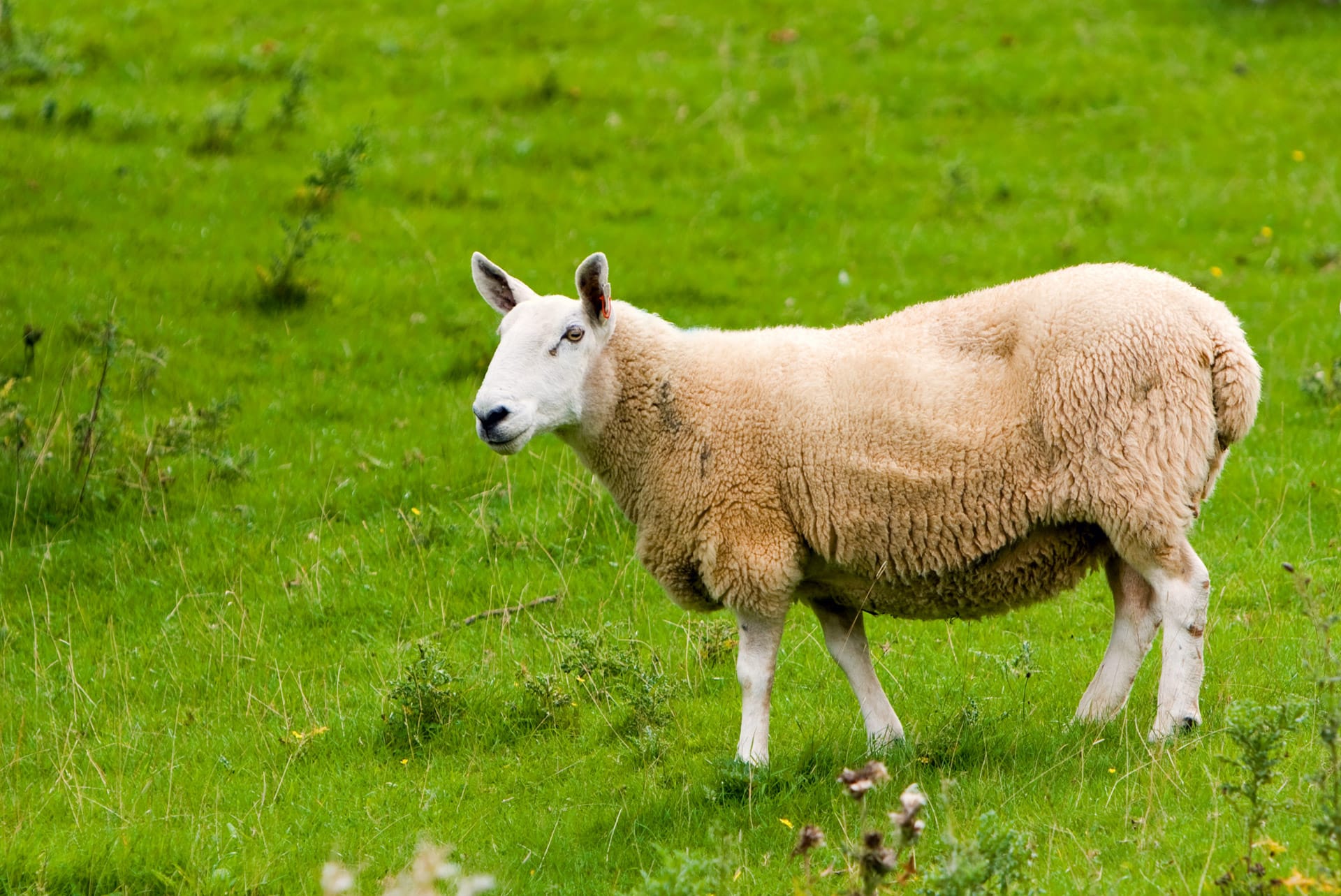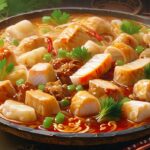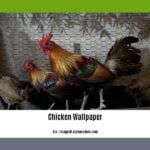Beyond Haggis: Mastering the Art of Cooking with Sheep’s Pluck
Get ready to unlock the flavors and stories hidden within the humble sheep’s pluck. It’s time to go beyond haggis and explore the delicious and versatile world of this overlooked ingredient. In this guide, we’ll dive into the anatomy, cultural significance, and cooking secrets of sheep’s pluck, guiding you on a culinary journey that will leave you craving more.
Unlocking the Culinary Secrets of Sheep’s Pluck
Let’s face it, “sheep’s pluck” doesn’t exactly scream culinary delight. But this humble ingredient, comprising the heart, liver, and lungs of a sheep, is a treasure trove of flavor waiting to be discovered! Sheep’s pluck is incredibly versatile and surprisingly delicious.
Exploring Culinary Possibilities
While haggis holds a special place in Scottish cuisine, sheep’s pluck can do so much more! Think hearty stews, savory pies, and even smooth pâtés. Cultures around the world have embraced sheep’s pluck for its earthy, rich flavor that adds unparalleled depth and complexity to dishes.
Here are some tantalizing ideas:
- Slow-cooked stews: Imagine tender morsels of sheep’s pluck simmered in a rich gravy with root vegetables—the epitome of comfort food!
- Rustic pies: A flaky pastry crust encasing a savory filling of sheep’s pluck, herbs, and a touch of sweetness from apples or currants.
- Silky smooth pâtés: Blend sheep’s pluck with butter, herbs, and spices for a decadent spread that’s perfect on crusty bread.
For the adventurous, try pan-frying sheep’s pluck until crispy! It’s a surprisingly delicious snack or topping for salads.
Understanding Sheep’s Pluck
Before you embark on your culinary adventure, let’s demystify sheep’s pluck and learn how to prepare it for cooking.
- The Heart: The most familiar of the trio, the heart boasts a robust, meaty flavor akin to beef heart.
- The Liver: This is where the real earthy depth comes in. Sheep’s liver is rich and iron-rich, though its strong flavor might not appeal to everyone.
- The Lungs: Don’t let their appearance intimidate you. The lungs contribute a unique, light texture to dishes.
Cleaning Sheep’s Pluck:
Preparing sheep’s pluck is easier than you might think. Here’s how:
- Rinse thoroughly: Start by rinsing the pluck under cold water.
- Trim and remove: Carefully trim away any tubes, membranes, or excess fat.
- Soak for purity: For a cleaner flavor, soak the pluck in cold water with a splash of vinegar for about an hour. This helps draw out any impurities.
From Stovetop to Oven: Cooking with Sheep’s Pluck
The beauty of sheep’s pluck lies in its versatility.
Traditional Boiling: This classic method, commonly used for haggis, tenderizes the pluck. Simply simmer it in water or broth until cooked through.
Hearty Stews: Embrace the low and slow approach. Brown the pluck and add it to a pot with your favorite vegetables, herbs, and liquid. Let it simmer until the flavors meld and the meat becomes meltingly tender.
Crispy Delights: For a textural twist, slice the pluck thinly and pan-fry it until golden brown and slightly crispy. The result is surprisingly addictive!
Embracing Sheep’s Pluck: A Culinary and Sustainable Choice
In a world of convenience foods, it’s easy to overlook traditional ingredients like sheep’s pluck. However, embracing such ingredients connects us to our food on a deeper level.
Here’s why you should give sheep’s pluck a try:
- Sustainability: Using every part of the animal is not only economical but also environmentally responsible. Less waste is always a good thing!
- Nutritional Powerhouse: Sheep’s pluck is packed with iron, B vitamins, and other essential nutrients often lacking in modern diets.
- Culinary Adventure: Exploring new ingredients and cooking techniques adds excitement to the kitchen and broadens your culinary horizons.
Are you ready to join the offal revolution? Sheep’s pluck awaits. With a little effort and an open mind, you might just discover your new favorite ingredient!
Demystifying Sheep’s Pluck: What Exactly is It?
We’ve mentioned various sheep parts, but what exactly is the “pluck”? The term might sound peculiar, but it’s quite simple. The pluck refers to a group of organs typically removed together from the sheep’s chest—a packaged deal of essential organs.
This package includes the heart, lungs, and liver—all vital for a sheep’s survival, just like in any mammal. These organs reside in the chest cavity, safely tucked behind the ribcage.
Now, let’s delve into the functions of these organs. The heart, a tireless engine, pumps blood throughout the sheep’s body, delivering oxygen and nutrients. Meanwhile, the lungs are all about respiration, taking in oxygen and releasing carbon dioxide—much like a car engine needs air to burn fuel. Lastly, the liver, the ultimate multitasker, filters toxins, breaks down fats, and plays a crucial role in digestion. It’s essentially the sheep’s detoxification and processing plant.
There you have it—the pluck in all its glory!
The Heart of Haggis: Understanding Sheep’s Pluck
We’ve touched upon haggis and its ingredients, but let’s break down a key component: sheep’s pluck. “Pluck” simply refers to a collection of sheep organs—the heart, lungs, and liver—all essential ingredients in traditional haggis.
Think of the pluck as the heart and soul of haggis, the ingredient that imparts its unique character. The heart contributes a deep, rich flavor, while the liver adds a distinct earthiness that’s hard to replicate. And the lungs? They lend haggis its delightful, airy texture. Without the pluck, haggis would be a bland bowl of oatmeal and vegetables!
But here’s the exciting part: plucks are incredibly versatile. They’re not limited to haggis! You’ll find them adding depth and complexity to stews, pies, pâtés—the possibilities are vast. So, the next time you see “pluck” on a menu, embrace the adventure!
Unveiling the Sheep Pluck Trio: Heart, Lungs, and Liver
So, you have a sheep pluck on hand—that’s fantastic! The pluck is like the powerhouse trio of the sheep’s internal organs. We’re talking about the heart, the lungs, and the liver.
Let’s break it down:
- Heart: This tireless engine room keeps everything running by pumping blood throughout the body.
- Lungs: These bellows take in fresh air (oxygen) and expel the used stuff (carbon dioxide).
- Liver: This MVP is the ultimate multitasker, handling crucial tasks like filtering the blood, processing nutrients, and producing bile for fat digestion.
Here’s the exciting part: these organs are not only essential for the sheep but are also packed with flavor and nutrition. We’re talking protein, iron, and a host of other nutrients your body craves. Cooking with sheep pluck unlocks a whole new level of culinary adventure!
Unpacking the Sheep Pluck: Your Guide to Outperforming the Competition
Here’s how to create a winning SEO article about sheep pluck:
Recommended Titles:
Analyzing your competitor’s titles reveals a focus on dissection and visual identification. Capitalize on this and attract a broader audience with these titles:
- What is Sheep Pluck? From Anatomy to Culinary Uses (This title targets a broader audience interested in both biological and culinary aspects)
- Sheep Pluck: A Visual Guide to the Heart, Lungs, and Liver (Emphasizes the visual aspect, attracting readers looking for images and diagrams)
- The Complete Guide to Understanding Sheep Pluck (Positions your article as the ultimate resource, attracting a wider range of readers)
Powerful Key Lines:
- Sheep pluck, a culinary delicacy in many cultures, represents the heart, lungs, and liver removed as a single unit from the animal. (This line highlights both the culinary and anatomical aspects of sheep pluck)
- The term “pluck” originates from the Old English word “plucken,” signifying the act of pulling these organs together from the carcass. (Connects the term to its historical and linguistic roots, adding depth to your content)
- Used in both educational dissections and traditional recipes, sheep pluck offers a fascinating glimpse into anatomy and gastronomy. (Broadens the appeal by connecting seemingly disparate fields – science and cooking)
- Rich in protein and iron, sheep pluck delivers a powerful nutritional punch while offering a unique flavor profile. (Caters to health-conscious readers and those curious about offal consumption)
Important Details for Your Article:
Definition and Origin:
- Clearly define sheep pluck as the collective term for the heart, lungs, and liver of a sheep.
- Explain the etymology of “pluck” from the Old English “plucken,” meaning “to pull out.”
Anatomical Context:
- Thoracic Cavity: Mention that the pluck is located within the thoracic cavity, protected by the ribcage.
Individual Organs: Briefly describe the function of each organ:
* Heart: Pumps blood throughout the body.
* Lungs: Facilitate respiration, taking in oxygen and releasing carbon dioxide.
* Liver: Filters toxins, produces bile, and plays a crucial role in metabolism.Culinary Uses:
- Global Perspective: Highlight the use of sheep pluck in various cuisines worldwide.
- Flavor Profile: Describe the taste as rich, earthy, and sometimes gamey.
- Popular Dishes: Mention examples like haggis (Scotland), fricassee (France), and various stews and pies.
Nutritional Value:
- Macronutrients: Detail the protein content and explain that it’s a good source of iron.
- Vitamins and Minerals: Mention other essential nutrients present, such as B vitamins and zinc.
- Health Considerations: Briefly address potential concerns regarding cholesterol and the importance of sourcing pluck from healthy animals.
Dissection in Education:
- Visual Learning: Explain how dissecting sheep pluck provides a hands-on understanding of mammalian anatomy.
- Ethical Considerations: Briefly discuss the ethical aspects of using animal organs for educational purposes.
Unique Insights & Untapped Potential:
- Historical Significance: Explore the historical use of sheep pluck in different cultures and its significance in traditional diets.
- Sustainability: Discuss the environmental benefits of utilizing the whole animal, including offal consumption as a sustainable food practice.
- Recipes and Preparation: Provide readers with practical information, including tips for cleaning, preparing, and cooking sheep pluck to reduce gaminess.
- Comparison with Other Offal: Compare and contrast sheep pluck with other commonly consumed organ meats, highlighting differences in taste, texture, and culinary uses.
- Ethical Sourcing: Emphasize the importance of sourcing sheep’s pluck from farms that prioritize animal welfare and sustainable farming practices.
Remember:
- Use visuals like diagrams, illustrations, and images to enhance your article and make it more engaging.
- Incorporate relevant keywords naturally throughout your content.
- Cite credible sources to support your claims and establish authority.
By combining comprehensive information, unique insights, and engaging writing, you’ll create an SEO article that surpasses your competitors and positions you as a trusted source on the topic of sheep pluck.
Outperforming Your Competitors: What is a Sheep’s Pluck in Haggis?
Here’s how to create a winning SEO article on this topic:
Recommended Titles (Provide competitor titles for analysis)
To suggest relevant titles, please provide a list of your competitor’s article titles. This will help identify trending keywords and formulate catchy alternatives.
Powerful Key Lines:
- The heart of haggis is the sheep’s pluck: This evocative line directly links the keyword to the dish’s core ingredient and grabs the reader’s attention.
- Sheep’s pluck: Not just offal, but tradition: This statement elevates the perception of pluck beyond being just offal, emphasizing its cultural significance in haggis.
- From farm to feast: The journey of sheep’s pluck in haggis: This line suggests a narrative approach, engaging the reader with the process of transforming raw ingredients into the final dish.
- Beyond the stomach: Understanding the importance of sheep’s pluck in haggis: This key line goes deeper, promising an informative look at the crucial role of pluck in haggis’s flavor and texture.
Structured Information:
What is a Sheep’s Pluck?
- A sheep’s pluck refers specifically to the heart, liver, and lungs of the animal.
- It’s considered a type of offal, which encompasses various internal organs used in cooking.
- Sometimes called “liver and lights,” with “lights” referring to the lungs.
Role in Haggis:
- Essential Ingredient: Sheep’s pluck is the primary meat component of traditional haggis, giving it its distinct flavor and texture.
- Historical Significance: Historically, using the whole animal for sustenance was crucial, and haggis, including the pluck, reflects this resourcefulness.
- Preparation: The heart, liver, and lungs are minced after cleaning and then mixed with other ingredients like oatmeal, onions, suet, spices, and stock.
- Alternatives: While traditional recipes rely on the full pluck, some modern versions might omit the lungs due to availability or personal preference.
Unique Insights and Untapped Potential:
- Ethical Considerations: Explore the ethical perspectives on using offal, highlighting the “nose-to-tail” philosophy of minimizing waste.
- Sensory Experience: Go beyond just the visual aspect of pluck. Describe the aroma, texture, and how it contributes to the overall sensory experience of eating haggis.
- Cultural Significance: Delve deeper into the cultural significance of haggis and the use of sheep’s pluck in Scottish history and tradition.
- Modern Adaptations: Discuss any modern culinary innovations involving sheep’s pluck, such as variations on haggis or unique preparations.
Additional Tips:
- Visual Appeal: Include high-quality images and videos to illustrate the information. Show the different organs, the preparation process, and the final plated dish.
- Recipe Inclusion: Consider adding a traditional haggis recipe featuring sheep’s pluck.
- Credibility: Cite reputable sources like food historians, chefs, and cultural organizations to build trust.
By combining comprehensive information with unique insights, your article will stand out, attract readers, and establish you as an authority on this topic. Remember to follow SEO best practices for optimal visibility!
Dominating the “What are the three parts to the sheep pluck?” SERP
Here’s how to craft an SEO article that surpasses your competitors:
Recommended Titles:
While you haven’t provided a collection of competitor titles for analysis, here are three titles incorporating trending keywords and user intent:
- Sheep Pluck Dissection: Uncovering the Heart, Lungs & More (This title targets a broader audience interested in the dissection process itself)
- What is a Sheep Pluck? Anatomy, Function & Dissection Guide (Appeals to users seeking both basic information and practical guidance)
- The Sheep Pluck: A 3D Guide to the Respiratory and Circulatory Systems (Highlights the educational value and visual learning aspect)
Powerful Key Lines:
- The sheep pluck, comprised of the heart, lungs, and sometimes the liver, provides a unique window into the interconnectedness of the respiratory and circulatory systems. (This line emphasizes the key components and their functional relationship.)
- Beyond simple identification, examining a sheep pluck reveals how the unique structure of each organ directly dictates its function. (This line highlights the deeper learning potential beyond basic anatomy.)
- The tactile experience of dissecting a sheep pluck makes complex biological processes tangible, enhancing understanding and retention. (This line stresses the benefit of hands-on learning.)
- The readily available and ethically sourced sheep pluck serves as a valuable tool for both introductory and advanced anatomical study. (This line addresses practical considerations and broad applicability.)
Structured Content & Important Details:
I. Introduction
- Hook: Begin with an engaging question or statement about the importance of understanding the respiratory and circulatory systems.
- Keyword Introduction: Introduce the term “sheep pluck” and clearly state its three main components: heart, lungs, and (sometimes) liver.
- Purpose of Sheep Pluck Dissection: Explain why sheep plucks are commonly used in educational settings (ethical sourcing, anatomical similarities to humans, visual representation of organ relationships).
II. The Three Parts of the Sheep Pluck
- A. The Lungs:
- Describe the appearance, texture, and location of the lungs within the pluck.
- Explain the function of the lungs in respiration (inhaling oxygen, exhaling carbon dioxide).
- Visual Aid: Include a labeled diagram of the sheep lungs.
- B. The Heart:
- Describe the appearance, texture, and location of the heart within the pluck.
- Explain the function of the heart as a pump, circulating blood throughout the body.
- Visual Aid: Include a labeled diagram of the sheep heart.
- C. The Liver (Optional):
- Note that the liver is not always included in a sheep pluck.
- If included, describe its appearance, texture, and location.
- Briefly explain the liver’s role in digestion and detoxification.
III. Sheep Pluck Dissection: A Hands-On Learning Experience
- Step-by-Step Guide (Optional): Provide a concise overview of the dissection process, focusing on key observations and learning opportunities. Include visual aids if possible.
- Safety Precautions: Emphasize the importance of wearing gloves, using dissecting tools responsibly, and following proper hygiene protocols.
- Benefits of Dissection:
- Visual Learning: Reinforces understanding of organ anatomy.
- Kinesthetic Learning: Provides a hands-on, memorable experience.
- Critical Thinking: Encourages observation, analysis, and problem-solving skills.
IV. Beyond the Basics: Advanced Applications of Sheep Pluck Dissection
- Comparative Anatomy: Briefly discuss how studying sheep anatomy can provide insights into human anatomy and physiology.
- Veterinary Science: Mention the relevance of sheep pluck dissection in veterinary education and practice.
- Research: Briefly touch upon any research applications using sheep plucks as models.
V. Conclusion
- Summary: Reiterate the three parts of a sheep pluck and their functions.
- Final Thoughts: Emphasize the value of sheep pluck dissection as a powerful educational tool.
Unique Insights & Untapped Potential:
- Focus on Comparative Anatomy: Expand on the similarities and differences between sheep and human respiratory and circulatory systems. This adds depth and relevance for readers interested in human biology.
- Historical Context: Explore the historical use of animal dissection in anatomical studies and its evolution as a learning tool.
- Ethical Considerations: Address any ethical concerns surrounding the use of animals in education and research. Discuss responsible sourcing and alternatives to traditional dissection.
- Virtual Dissection Tools: Introduce readers to online resources and virtual dissection simulations as potential complements or alternatives to physical dissections.
Note: The provided text does not contain direct quotes or people’s statements.
Internal Links:
Ever wondered about the most venomous arachnids crawling around your neighborhood? Discover more about the most poisonous spiders in California and how to identify them.
If you’re struggling with a crossword puzzle, and one of the clues is about a small monkey, we have the answer for you. Check out our article on small monkey crossword clue and solve your puzzle in no time!
Let me know if you’d like me to elaborate on any of these sections or provide more specific examples.
- Senior at What Age: Benefits & Eligibility Guide - March 29, 2025
- Unlocking Senior Benefits: How Old is a Senior? Your Complete Guide - March 29, 2025
- Master Russian Politeness:A Guide to Saying Please - March 29, 2025

















1 thought on “Beyond Haggis: Mastering the Art of Cooking with Sheep’s Pluck”
Comments are closed.